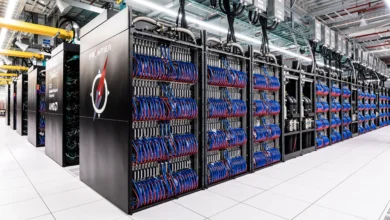
Employee Retention Techniques For 2022
Associate professor Anthony Klotz of Texas A&M University predicted a ‘Great Resignation’ would be the next challenge for businesses. As post-pandemic employees are called back to work in person or increased hours, worker retention will be critical. Some may completely exit the 9 to 5 grind, others will want to work remotely, and others may want to move on in the labor market. In April of 2021, the Bureau of Labor Statistics reported that 4 million Americans quit their job: they posit that employees were confident they could find better work.
Indeed, the virus has remarkably changed the world of work — and employers must adapt or see their business fold. So, what can businesses do to curb increased turnover? Here are some techniques that will be useful to carry into 2022.
Why Do Employees Leave?
It is essential to look at why employees leave in the first place. Exit interviews and off-boarding are a great way to learn why employees leave specifically; however, reasons typically tend to be the same. For example, they may feel overworked, have a low salary, have poor benefits, have little room to grow, and lack recognition. However, these issues can be rectified.
Take a Data Driver Approach
Retaining key talent through data insight will allow you to tap into data that is already available and its potential predictive powers of employee retention. Doing so positions businesses to deliver incentive compensation specifically designed to retain high-performing employees who have the potential for future success and might otherwise be at risk of leaving the company. The same analysis can also inform and enhance decisions on reward programs for individuals who are not high performers or are deemed to lack the potential to become high performers or leaders in the company.
Hire Right
Glassdoor reported that 35% of employers who hire new employees do so, expecting that more employees will quit in the year. If you have already anticipated one-third of your new hires to leave, that’s not an excellent way to start the hiring process!
To prevent this from happening, you could use recruiters specializing in your field of work that knows how to look for suitable applicants. Additionally, be honest about what you expect from the new hire. Whatever you do, don’t omit the job details just because you are desperate to fill an open position. Being transparent is crucial in finding the right employee for your company.
Use Mentors Or Coaches
By pairing a new hire with a seasoned employee, you ensure the most significant change in employee retention. Rather than throwing them into the deep end, you allow them a confidant they can send their worries to and they may feel nervous to talk about their manager. Your veteran employee will act as their best resource, and vice-versa, the new hire can offer fresh eyes and a new perspective on how things are done. A mentor can be there to welcome them into the culture.
Employee Benefits
A good benefits package that spans across financial, mental, and physical wellbeing and is tailored to the needs of your workforce is one of the best ways to help improve staff retention. This includes schemes such as employee health and wellness programs, hospital treatment insurance, fairer financial repayment options, and benefits to save employees’ money, such as childcare vouchers and discount schemes. Why not talk to your employees and take their views of what kinds of benefits are more important to them?
Listen to Employee’s Feedback
For employee retention, It is essential to get their feedback. So if you want to boost morale and employee happiness, then it is time you listened and acted on what your employees are saying. Don’t wait for an annual review to make your move. Instead, send weekly or monthly feedback surveys to your employees, from marketing strategies to different processes. Make sure your employees have a platform where they can voice their thoughts. Consider a suggestion box that they can access at any time.
Skills Enhancement
Employee retention is enhanced with skills improvement. Why? “New technology, new selling techniques, changes in employment laws, and the significant impact of the internet are all compelling reasons to keep permanent employees in the loop. Furthermore, employees will want to stay with your company if there are examples and opportunities for them to develop and progress. If they are stagnant for a long time, they will begin to look for those opportunities elsewhere.
Keep your employees trained with outside seminars and classes, computerized training, and learning management systems.
Offer Flexible, Hybrid Work Schedules
The world had changed in more ways than one due to COVID; people realized that they can, in fact, work from home well. As a result, employee retention solutions like flexible schedules and hybrid work schedules are even more critical. This is no longer a mere perk or benefit but a must. By offering a hybrid workplace, you create a win-win scenario. And right now, retaining employees is a top priority.
A hybrid workplace allows your employees to save time, money, face fewer distractions, be safer, and have a better work-life balance.
Whereas employees can avoid office politics and drama, reduce absenteeism, save costs on rent and infrastructure, and save on overhead costs.
Recognition
Learning and development, engagement, and recognition are critically important for long-term retention. Genuinely recognize and express appreciation for employee accomplishments, whether these be spot bonuses or prizes for significant contributions. Build credit as an ongoing part of employee-manager conversations.
Offer learning and development opportunities and regularly discuss career growth with employees. Set individualized goals and plans of action during your performance management process, and support employees with the tools they need to achieve them.
Review Your Compensation Structure
Money is not the only thing that matters to the modern employee; purpose, work-life balance, and workplace culture are often equally, if not more important.
However, to remain competitive, you must understand industry benchmarks and best practices. For example, a high turnover rate will cost your business far more than reasonable compensation packages. So make sure you’re working with an expert to evaluate whether your pay structures are appropriate to attract and retain the staff that best support your organization’s operational needs and culture.
Put a Priority on work/life balances for your employees
This can take the form of flexible work hours or even the ability to work at home for some positions. Maintaining a healthy work/life balance is incredibly important for your worker’s health and happiness. Failure to take this seriously can lead to serious health issues, including stress, high blood pressure, and burnout.
Leadership Opportunities Are Great Motivators
Give your employees the chance to take ownership of projects and be engaged at higher, strategic levels when possible. Again, this makes them feel valued and allows them to make significant contributions to the business direction and strategy. Furthermore, it will encourage them to stay within the company in the hopes of progression for a management opportunity.
Working Environment
We all want employees to enjoy and look forward to going to work as this usually leads to a positive working environment. Creating a pleasant working environment can be achieved by encouraging a positive workplace attitude. For example, coaching rather than criticism, implementing strategies against bullying or harassment, valuing employee opinions, promoting teamwork and positive employee relationships, being appreciative, and even just saying ‘thank you every once in a while can make a huge difference.
In addition, ensure that the work environment is physically safe and pleasant, enhances mental and physical health, and is accessible for all employees.
ESOPs Employee Stock Ownership Programs
ESOPs (Employee Stock Ownership Program) is an excellent program for employee retention. Making the employees become stakeholders of your company helps them stay invested in its performance.
Alerting Work Responsibilities
Doing the same work becomes tedious.
In that case, don’t make employees stick to their laid down responsibilities. Instead, involve them in various tasks and give them a chance to work with other departments. This will help generate better ideas and improve coworker relationships. It will also make them more skilled and advanced in their professional development.
You can also try to encourage creativity and give them an opportunity for their personal growth!
Final Note
The last two years have been difficult for both employees and employers. Employers had to let go of their valuable employees, and many of us lost our jobs. With the increase of remote jobs, attracting the right talent has become more challenging than ever. In addition, people now have the option to work anywhere from the comfort of their homes.
As the job market picks up its momentum, keep an eye on the latest market standards and best practices for employee retention. For instance, many companies have provided their employees with complete work from home set up. Employees are a company’s lifeblood, and they should be treated as such.






